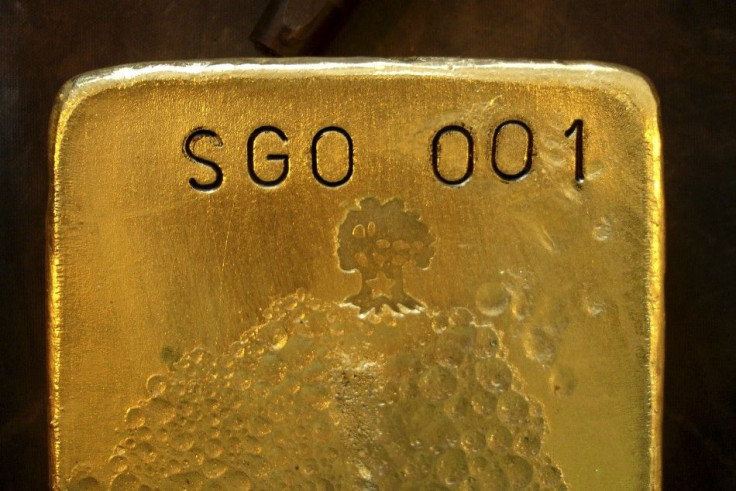Gold Retreats in European Trading

Gold eased on Wednesday, taking its cue from the decline on the stock market after a downgrade of the debt of two major French banks because of their holdings of Greek debt.
Gold priced in euros was restricted by a pick-up in the single European currency but remained within less than 2 percent of record highs struck the day before.
The alarm caused by the euro zone debt crisis has intensified this week after Moody's Investor Services cut its ratings on the debt of Societe Generale and Credit Agricole, France's second and third largest banks, while on Tuesday, Italy was forced to pay the highest interest on five-year debt at auction since joining the euro in 1999.
Also reflecting the unease in Washington over the crisis, U.S. Treasury Secretary Timothy Geithner took the unprecedented decision to attend a meeting of EU finance ministers on Friday.
The inverse correlation that has prevailed between the gold price and global equities since early July is now at its weakest in a month, meaning gold is more likely to move in tandem with the stock market.
Spot gold was last down 0.2 percent at $1,830.19 an ounce at 0950 GMT (5:50 a.m. ET), having lost 1.3 percent so far this week and set for its second weekly fall, its longest since early July.
Gold priced in euros was last down 0.2 percent at 1,337.18 euros an ounce, just 1.4 percent shy of the all-time high at 1,373.92 euros hit on Monday.
The market is confused over whether it will go higher or lower next. The focus has shifted to Europe and perhaps the euro (gold) price is a good indication, in that we are hovering around the highs but not making new highs, said Mitsubishi analyst Matthew Turner.
In the background is the Fed meeting a week today. Gold was driven higher on the expectation of more Fed easing and so it's wait-and-see mode for now, he said.
Greek Prime Minister George Papandreou, French President Nicolas Sarkozy and German Chancellor Angela Merkel are due to hold a conference call later on Wednesday after talk resurfaced among euro zone policymakers about a Greek default.
Markets were hopeful it may result in support for Greece and tame concerns about a Greek default but they were not confident any agreement would be enough to stem contagion to larger euro zone countries such as Italy and Spain.
CRISIS SPREADS
Fear of the spread of the debt crisis to the larger economies of the euro zone has been a major driving force behind gold's 28-percent rally this quarter.
Flows of metal into exchange-traded funds backed by physical gold -- one of a number of gauges of investor demand for gold -- have risen by 4 percent so far this quarter, compared with a 1 percent rise in the third quarter of 2010.
The dollar's strength against the euro has acted as a brake on gold, which usually reacts negatively to a rising U.S. currency.
But as with its relationship with the equity market, gold's correlation with the dollar has also eroded ahead of the Federal Reserve's policy meeting next week, which will provide the markets with the next signal on where U.S. monetary policy is headed to revitalize the flagging economy.
As long as the dollar remains buoyant, it will hamper gold's potential, said UBS strategist Edel Tully in a note.
Moreover, as we have often noted, gold is not immune to downward pressure whenever risk aversion becomes extreme and assets are broadly sold to raise cash: while we are not quite there yet, tension is definitely building up and equities are trading heavy, she said.
After having spent trillions of dollars over the last couple of years on buying government debt to anchor market interest rates and committing to keeping U.S. rates around zero for at least two years, many fear the Fed may be running out of options to kickstart growth and job creation.
The prospect of another round of bond-buying, or quantitative easing, seems to have receded and the Fed is now widely expected to signal it will sell shorter-dated Treasuries and buy longer-dated debt to lower longer-term interest rates.
Gold has been a major beneficiary of the Fed's QE program, having risen by 40 percent since the start of the central bank's $600-billion bond-buying spree that ended in June, thanks to the rise in liquidity and the downward pressure on interest rates that make it a more attractive investment.
In other precious metals, silver was down 0.1 percent at $41.00 an ounce, platinum was flat at $1,809.74 an ounce, while palladium was down 0.1 percent at $720.75 an ounce.
© Copyright Thomson Reuters 2024. All rights reserved.






















